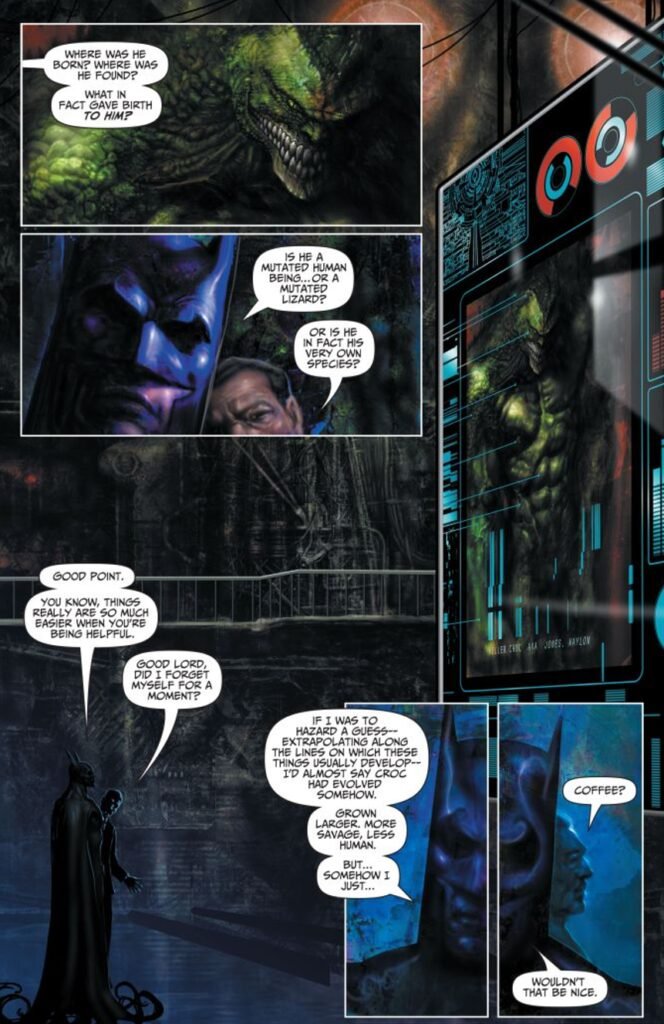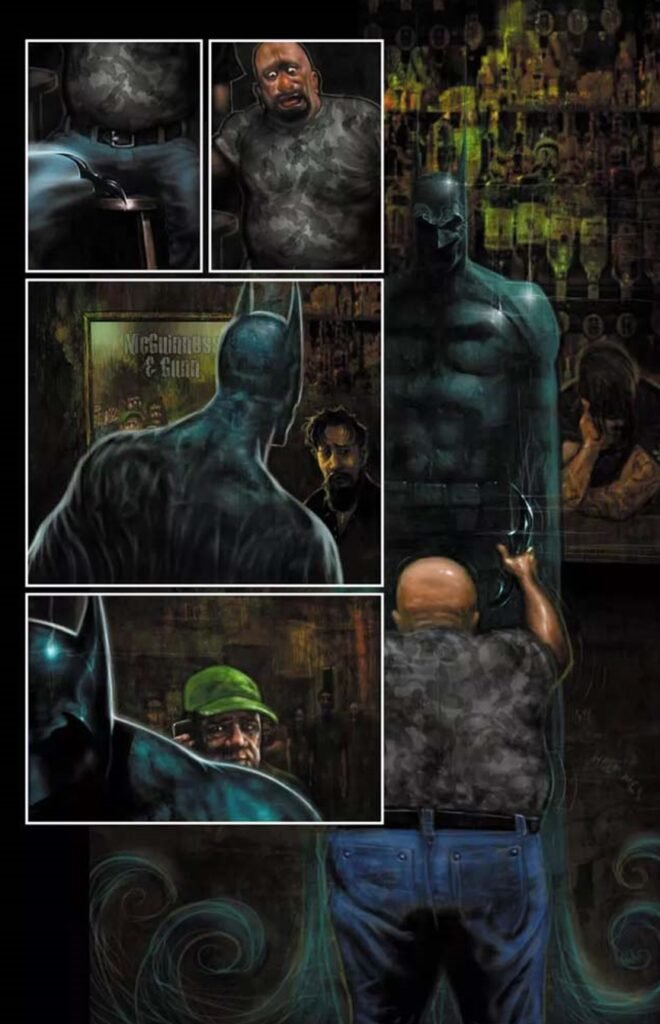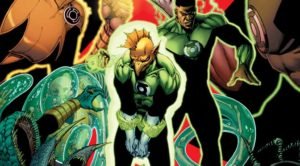Writer : Garth Ennis
Artist : Liam Sharp
Publisher : DC Comics
Year : 2021 (miniseries 1-6)
Batman, as a character, has become part of global popular culture, popular being here a way of highlighting a certain anthropological and social attitude towards what might be called modern folklore. Created by Bill Finger and Bob Kane, Batman has been the subject of many changes, many interpretations (and, also, reinterpretation), a necessity given its long – seemingly unending – life.
There is a fascination we feel towards Batman, both in what he represents (the pinnacle of humanity, a stoic symbol of progress, both biological and technological) and in where his adventures are set (Gotham as the worst city you’d want to live in, possessing the charm of decadence, a dystopia that functions as a caveat in regard to what chaotic – and corrupt – urbanization can lead to).
Batman’s nemeses, that gallery of rogues that go from the blatantly kitsch to the grotesquely deranged, fascinates us as well, as the psychological madness that pervades them is such that it can easily be used to delve deeper towards what we call “mature material”. Batman, then, cleverly represents the whole spectrum of the superhero genre, moving from its original format (for kids, that is) to a more adult take.

Irish writer Garth Ennis’ interpretation of Bruce Wayne, it cannot be denied, is that of a more caustic and sardonic character. Mr Ennis’ Batman has a dark sense of humor and he knows quite well what he represents: the fear that he imparts on people, the terror that moves blabbering mouths to complete silence, and the imposing figure that exudes a dreadful sense of having come face to face with an impartial judge. Batman knows he represents justice, just as he knows that those who oppose him represent a kind of secular evil. All of these elements come to give shape to a character that is given a menacing silhouette by the masterful Liam Sharp.
All throughout this miniseries, then, six issues in total, what we are being given is a Batman who not only recognizes the dread he instils, but one who also acknowledges (and, perhaps, revels in) his status as a man who has reached the peak of what the human body and the human mind can attain. An Übermensch who, in the hands of Mr Ennis, does not shy away from also showing tinges of sarcasm, a grotesque figure which connects to the reader who realizes that going around a city dressed up like a bat is something far removed from sanity.
The story itself is excellent in its being as absurd as it is logical. Deftly moving from psychological horror to splatter, it mixes the staple of any Batman narrative (that is, the idea of solving a mystery, the mark of the detective story) adding an element of science fiction and biological warfare. The end result is such that we, the readers, are put in such a position as it becomes quite difficult to know what is going to happen next. An intelligent architecture, the way the mini-series unfolds manages to take us by surprise without playing the card of subverting expectations just for the sake of it.
On the contrary, Mr Ennis cleverly founds his tale and his characterizations both drawing on the classic mythology of Batman’s world and reshaping this very world, balancing between the likely and the unlikely. As grotesque as the story is, then, it also intelligently makes use of the tropes of Finger and Kane’s creature, injecting a sense of freshness into the character.
The weak point of the narrative is the art, yet not as we might expect. Mr Sharp’s pages are mesmerizing, and there is an element of artistic freedom that shows how splendid the ingredient of the grotesque can be. Here, too, there is a fine balance between experimentation and the classic rules of sequential art.

Why are we to say that there is a problem here, then? The answer lies in the lack of complete freedom and the mechanisms of preemptive censorship (which this review site has ruminated on before): more than once must we acknowledge the fact that the original vision of what we were supposed to see has been toned down or made unrecognizable. The horrific and graphic nature of parts of the story, indeed, ends up becoming less shocking than it should have been; we are left wondering why a book that is supposed to be read by mature readers cannot be given full freedom of expression, especially with Mr Sharp’s artistic abilities being so impressive and Mr Ennis’ script being so bloodily funny.
A little experiment, then, both in its genre and its artistic rendition, Reptilian comes off as a story that is sure to entertain and give us another point of view on the Batman mythos, the demonstration that the grotesque can be the source of an unending series of laughter.

